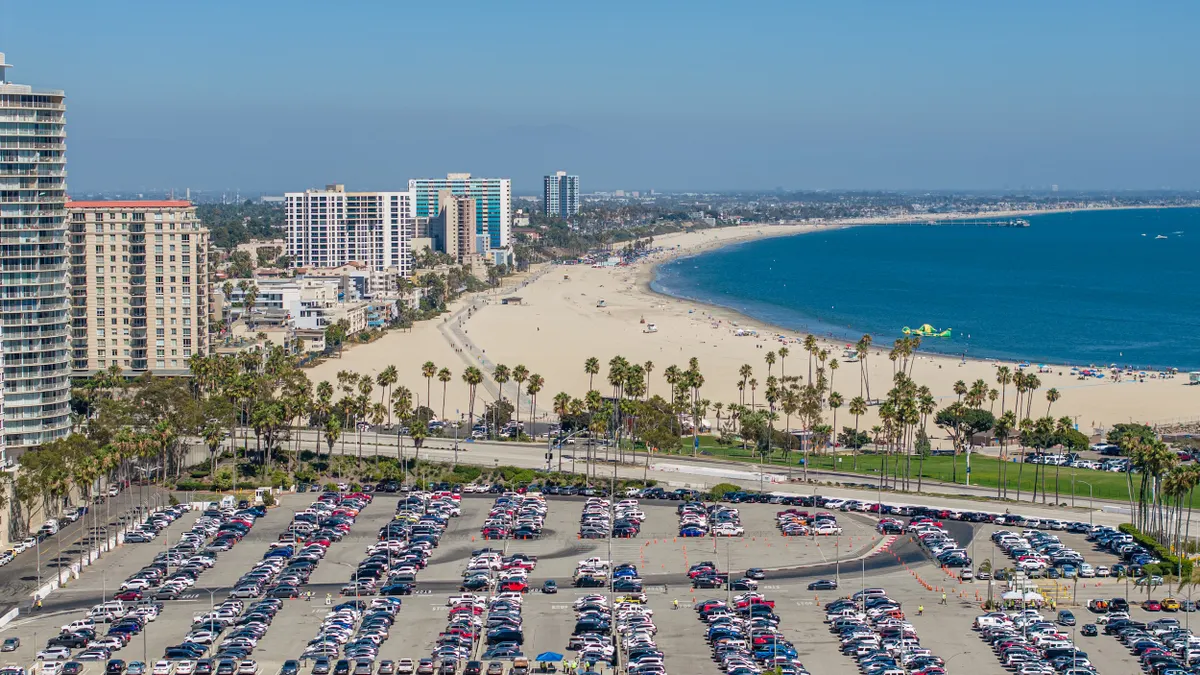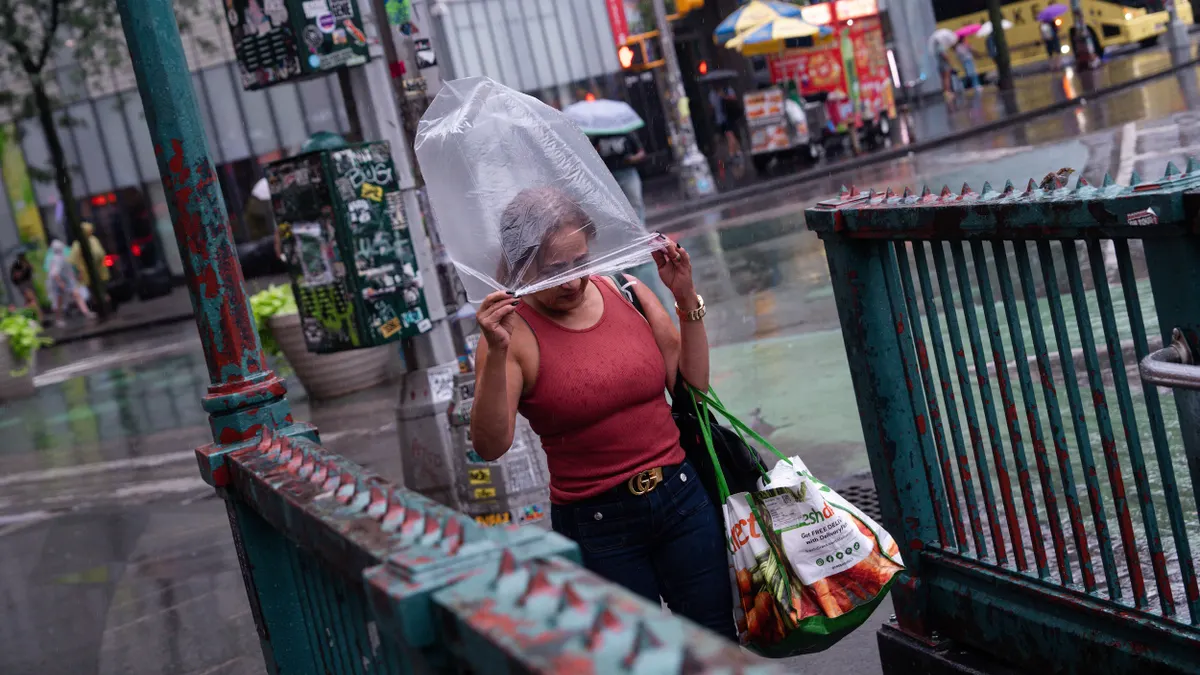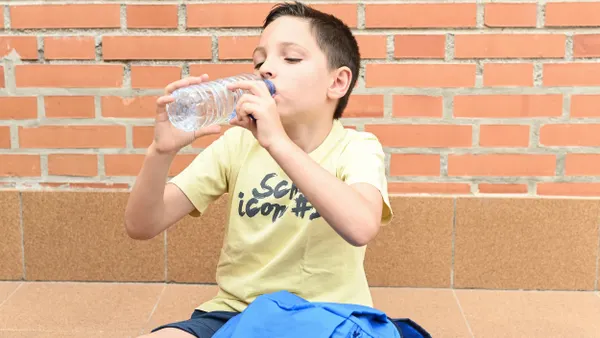New York has been at the forefront of advancements in the smart cities space for years, from rolling out Wi-Fi enabled digital kiosks to sign language video calling.
To help excel these advancements, Miguel Gamiño took on the role as the city's Chief Technology Officer in October 2016, following a tenure as San Francisco's Chief Innovation Officer. He has the mammoth responsibility of collaborating with all of the agencies in America's largest city to develop a smart city and Internet of Things (IoT) strategy.
Gamiño is also involved with the city's municipal tech engagement program, NYCx, aimed at solving the city's biggest challenges by encouraging resident solutions, especially with tech. The program recently announced three finalists for testing high-speed Wi-Fi and 5G on Governors Island.
Smart Cities Dive caught up with Gamiño to learn more about NYCx, inclusivity and implementing innovations equitably.
The following interview has been edited for brevity and clarity.
SMART CITIES DIVE: How does the city select the "challenges" that NYCx focuses on?
MIGUEL GAMIÑO: The essence of the program, one of the top-line missions, is to transform and activate the relationship between industry, community and the government. It’s kind of a tryout of stakeholder groups to figure out how we can mobilize technologists to work on things that are most pressing, as identified by the community itself. Instead of just assuming we know what they need and having technologists building it in a lab somewhere, [we are] actually engaging and asking them up front and having the community participate along the way.
The way that the challenges are identified is through two categories. One group of challenges we call “moonshots.” Moonshots are really the mayor [and] administration's citywide goals. Things like citywide connectivity, climate change action, the U.S. Census, those big citywide issues or priorities. We identify those... and other stuff that comes from the top-line priority-setting processes, and we identify things that we can activate the technology community around to help contribute to or accomplish.
The other end of the spectrum are the challenges we call "co-lab," which are neighborhood-based. They’re grassroots. Moonshots are top down, and the co-labs are bottom up. They start conversations with members of the community, and not specific to technology. We just have conversations with them about their priorities, concerns, two or three things they need or want addressed most. And then we take that, identify problems and then present them in the form of challenges.
What barriers have you encountered with developing and implementing this type of program?
GAMIÑO: Probably the big thing is educating folks about what we’re working on. Because it’s a brand new idea and a brand new approach, one of the hurdles has been to get people inside government, inside industry and inside communities — stakeholders in all three of the groups — to understand what they should expect from NYCx. And also to accept some level of learning process.
We’re starting out acknowledging that we might not have it perfect from the beginning, but it’s still important enough that it’s worth getting started. Having everyone also have the expectation that we’re going learn and improve along the way, that it’s not expected to be a perfectly formed program from day one. Instead of trying to get it perfect and then bring it to life, we’re bringing it to life in a very structured and well-informed way, but expecting that we will learn things along the way that will help continue to shape it to make it better and better.
I think the understanding, awareness, managing expectations and engagement has been ... I wouldn’t say it’s a challenge because it’s actually been easier to do than many of us thought, but it’s been the important first step.
Is it difficult to mesh NYCx with existing smart technologies and initiatives?
GAMIÑO: The important distinction is that NYCx is not limited to "smart cities" applications. That’s a big area or body of opportunity, but sometimes the solution will involve smart city or IoT type of technologies and sometimes they won’t. Sometimes it’s a different set of technologies that are brought to solve it.
I think an evolution of the smart cities thinking is putting the problem and the people first, and then finding the best opportunity to have technology help solve that. First we set it out from the beginning, but meshing things into it has not been difficult for that same reason, that we’re identifying the problem and then the integration of existing solutions or technologies into it. It has been fairly easy because we’re starting from the problem phase [and] then the technology application becomes responsive to the problem phase instead of the reverse.
[We're not] looking at this collection of technology that’s out there and then trying to force them into some portfolio and use those things to go looking for problems that may or may not exist. That’s the opposite of what we’re doing.
You said you start with people. How do you implement equitable innovations? Is including all residents in the advances something you’re focused on?
GAMIÑO: One-thousand percent. The people aspect is far and away the core to all this stuff that we’re doing. Our mantra is we make tech work for people. We make tech work for all people. That is intended to remind us all about why we’re doing this in the first place.
If something that we are talking about doesn’t have a positive impact on people’s lives in New York and the goal of making New York the fairest city in America, and accomplishing that through a focus on equity and inclusivity... then we really question from the beginning if we should be doing it at all. It is the guiding principle above all.
"...[W]e have to make sure that broadband is pervasive and is something that everyone has access to and can afford ... That’s for all 8.5 million New Yorkers, not some of them, not 90% of them, but 100% of them."

Michael Gamiño
CTO of NYC
Because that’s our own expectation, that’s what people started to come to expect with us when we enter an engagement. We’re always going to ask first what the people impact is of what we’re trying to do. And then follow on that with making sure technology has the most positive version of that effect.
To the point of inclusivity and making sure this serves everyone, one of the fundamental parts of the office is broadband. I’ve said over and over again, publicly and privately, we have to make sure that broadband is pervasive and is something that everyone has access to and can afford and have a high degree of quality in their broadband experience. That’s for all 8.5 million New Yorkers, not some of them, not 90% of them, but 100% of them. If we don’t, we might be making great progress but that great progress might only serve some people if others can’t have access to the stuff that is being developed. That notion of connectivity or pervasive broadband is paramount to achieving those fairness and equity goals through the other work we do.
How exactly do you go about ensuring broadband for everyone?
GAMIÑO: We’ve got a whole program working on tackling that problem. We’ve issued a couple of RFIs recently to continue to collect information from the experts in the world — academia, industry, consumer groups, anyone and everyone who has insights to offer — on how we achieve that. We’ve been openly inviting that insight.
We have some consultants helping us work out some specifics of what the plan should consider and look like. In fact, with NYCx our first moonshot challenge was a connectivity challenge on Governors Island that married the near-term objective of establishing connectivity on the island, but also the long-term value in gaining the insights for how connectivity might be delivered differently, by inviting the new players and thinkers in addition to inviting the existing players. Everyone’s invited to help us understand better ways to accomplish that.
We’re in that phase of gathering all that insight. Of course, I'm biased, but I think we’re doing it more comprehensively and wider and deeper than maybe any other municipality has done so far.
New York has its own Department of Transportation and transit authority, but how does your work on advancing technology in the city impact residents’ mobility?
GAMIÑO: The IoT [and] smart cities body of work certainly has a contribution. But again, I think when you talk about mobility, traffic and congestion, we start with the problem statement, the impact on people, and then use that to frame the way we think about it. Instead of just assuming that shoving technology onto the streets is going to solve the problem, I think we’re much more thoughtful about addressing the challenge ... There’s a lot of technology being implemented there that’s continuing to improve those challenges and that will continue to grow.
New Yorkers are known for being proud of their city and its culture. How do you advance technology in the city while still preserving that New York culture?
GAMIÑO: We’re not coming up with technology and saying: "Here is the medicine you need, take it whether you like it or not." That’s precisely the point of taking the people first approach. Not only respecting it, but also embracing the culture.
The truth is, the culture is not just New York. The culture varies borough by borough, and even within boroughs, neighborhood by neighborhood. If you talk to someone who grew up in one borough and ask them about another, you’ll get a whole list of statements.
"The truth is, the culture is not just New York. The culture varies borough by borough, and even within boroughs, neighborhood by neighborhood."

Michael Gamiño
CTO of NYC
It’s also about being local in terms of our insight gathering and engagement. Being as local as we can and then bubbling it up to inform how we can make impact at scale across the city. That is the whole essence of it, the whole point of "people first." To make sure to embrace New York City’s culture even as it changes from neighborhood to neighborhood into our thinking about how technology should play a part.
With Google’s expansion in the Meatpacking District, some say this will turn New York into a major tech hub and what some call "Silicon Valley East." Do you think that’s an accurate characterization?
GAMIÑO: I don’t really use the Silicon Valley analogy. Having spent some time in San Francisco, it’s a great city and there’s a lot of great things happening there, but I also think New York is a different city and has a different current set of strong and important assets and values and culture.
The tech industry is certainly growing here, but what the tech industry looks like in New York is different than the way it looks on the West Coast. Here, tech is not just an industry of its own, but it’s a major contributor to the progress made in all of the existing industries that are here ... Technology is what’s shaping the evolution of many of those industries, apart from it being an industry of its own.
I think what’s super impactful and largely different is the diversity here, not just diversity of people and the color of their skin or their gender, but also where they’re coming from and where they want to go. Their experiential diversity is also really key. And that diversity of industry. All of those things make for a different recipe of tech industry in New York.
I think New York has always probably been a tech powerhouse, it’s now becoming more substantial and also more recognized for its role in the global tech community. I don’t think it’s exactly right to say it’s "Silicon Valley East," I think it’s a force of influence of its own brand and flavor.


















